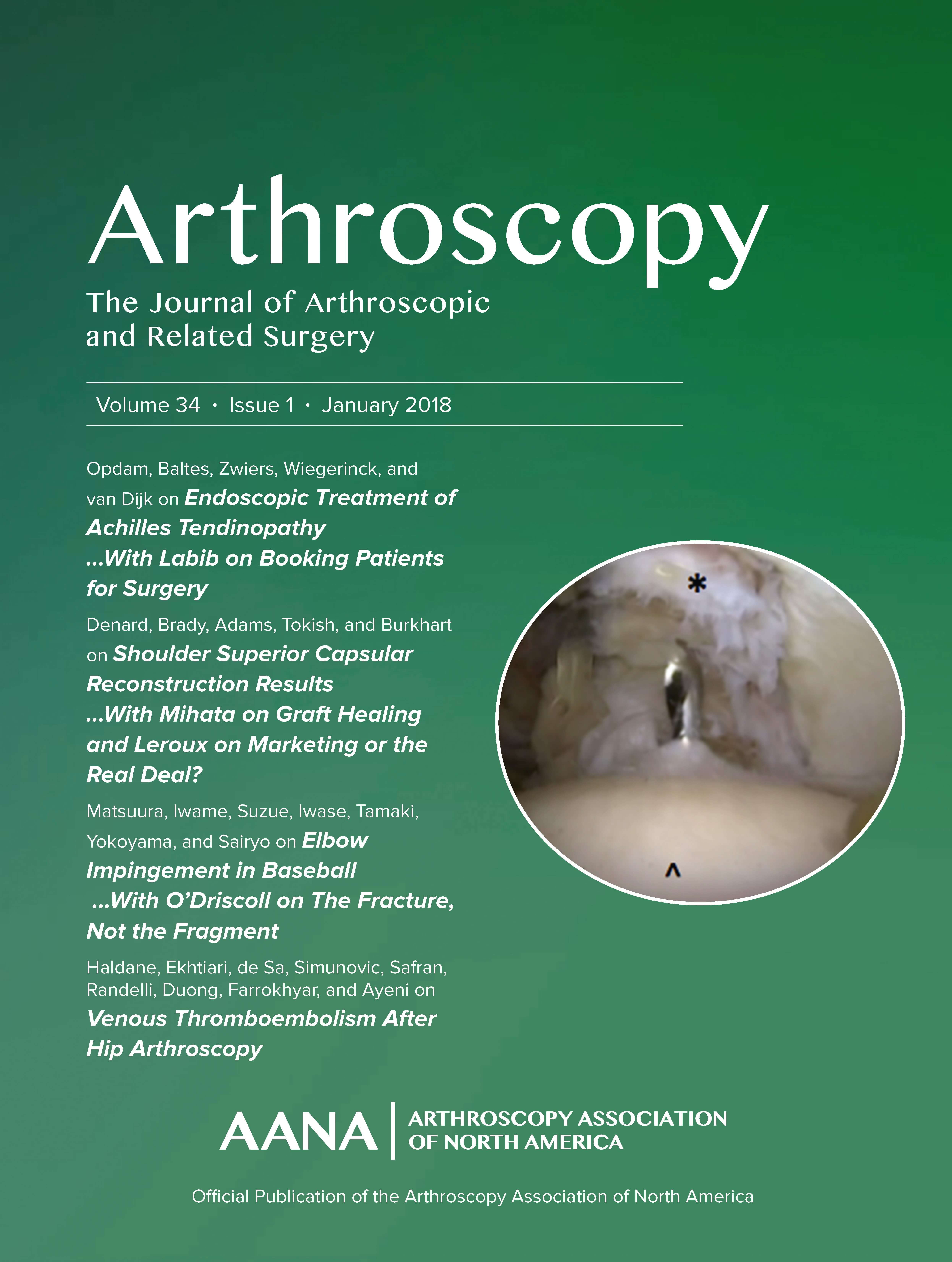
Femoral tunnel enlargement reduced with autologous ruptured tissue vs conventional DB ACLR

Femoral tunnel enlargement reduced with autologous ruptured tissue vs conventional DB ACLR
Reduction of tunnel enlargement with use of autologous ruptured tissue in anterior cruciate ligament reconstruction: a pilot clinical trial
Arthroscopy. 2014 Apr;30(4):468-74. doi: 10.1016/j.arthro.2013.12.014.Synopsis
10 patients with ACL deficiencies were randomized to undergo double-bundle ACLR with either autologous ruptured ACL tissue sutured to grafts or conventional grafts, to compare magnitude of tunnel enlargement and clinical outcomes. Results indicated a significant decrease in femoral tunnel enlargement between groups, favouring the ruptured tissue group. Tibial tunnel enlargement ratios were similar between groups. Clinical outcomes were also not significantly different between groups.
Was the allocation sequence adequately generated?
Was allocation adequately concealed?
Blinding Treatment Providers: Was knowledge of the allocated interventions adequately prevented?
Blinding Outcome Assessors: Was knowledge of the allocated interventions adequately prevented?
Blinding Patients: Was knowledge of the allocated interventions adequately prevented?
Was loss to follow-up (missing outcome data) infrequent?
Are reports of the study free of suggestion of selective outcome reporting?
Were outcomes objective, patient-important and assessed in a manner to limit bias (ie. duplicate assessors, Independent assessors)?
Was the sample size sufficiently large to assure a balance of prognosis and sufficiently large number of outcome events?
Was investigator expertise/experience with both treatment and control techniques likely the same (ie.were criteria for surgeon participation/expertise provided)?
Yes = 1
Uncertain = 0.5
Not Relevant = 0
No = 0
The Reporting Criteria Assessment evaluates the transparency with which authors report the methodological and trial characteristics of the trial within the publication. The assessment is divided into five categories which are presented below.
2/4
Randomization
4/4
Outcome Measurements
4/4
Inclusion / Exclusion
4/4
Therapy Description
3/4
Statistics
Detsky AS, Naylor CD, O'Rourke K, McGeer AJ, L'Abbé KA. J Clin Epidemiol. 1992;45:255-65
The Fragility Index is a tool that aids in the interpretation of significant findings, providing a measure of strength for a result. The Fragility Index represents the number of consecutive events that need to be added to a dichotomous outcome to make the finding no longer significant. A small number represents a weaker finding and a large number represents a stronger finding.
Why was this study needed now?
Recent developments in anterior cruciate reconstruction have focused on achieving anatomic reduction of the AM and PL bundles with hamstring grafts. However, while patients enjoy favourable outcomes, treatment can lead to significant tunnel enlargement and complicate ACL revision surgeries in the long-term. Recently, researchers have observed properties of tendon-bone healing in ruptured ACL tissue (i.e. CD34+ cells). Applications in animal studies have demonstrated a capacity for healing and ability to reduce magnitude of tunnel widening. This study aimed to pilot a technique that utilizes autologous rupture ACL tissue as a graft in a human clinical study.
What was the principal research question?
Does the use of a graft, with autologous ruptured ACL tissue sutured to its ends, in anterior cruciate ligament reconstruction decrease tunnel enlargement and improve clinical results when compared to conventional ACLR, 2 years after treatment intervention?
What were the important findings?
- Tunnel enlargement was significantly less in the ruptured tissue group compared to the conventional (control) group in both femoral tunnels (AM and PL). Femoral AM tunnel enlargement ratios were 84.6% +/- 15.9 and 119.5% +/- 24.1 in the ruptured tissue and control groups respectively (p=0.0283). Ratios for the PL tunnel were 84.2% +/ -14.0 compared to 151.3% +/- 23.8, respectively (p=0.0090).
- Tunnel enlargement for femoral AM and PL tunnels were not significantly different between groups. Enlargement ratios for tibial AM tunnel were 71.0% +/- 11.2% versus 77.8% +/- 15.4% for the ruptured tissue group and control group, respectively, and 65.8% +/- 10.8% versus 96.9% +/- 30.5 for the PL tunnel (p>0.05 for both comparisons).
- Clinical outcome measures at 2 years postoperative did not differ significantly between the ruptured tissue group and control group: Mean Lysholm scores were 92.6 vs 93.0, respectively, anterior knee stability 1.4 vs 1.0, and pivot-shift test results 4/5 in both groups (p>0.05 for all).
What should I remember most?
Tunnel enlargement of the femoral AM and PL tunnels were both significantly reduced in the ruptured tissue group compared to the conventional group. Tibial tunnel enlargement was comparable between techniques. Additionally, Lysholm scores, anterior knee stability, and pivot-shift tests were not significantly different between groups.
How will this affect the care of my patients?
Double-bundle ACLR using grafts of autologous ruptured ACL tissue sutured to doubled semitendinosus tendons appeared to yield less femoral tunnel widening while providing similar clinical outcomes when compared to a conventional technique. Findings from this pilot study warrant larger next-phase trials in populations of a wider age range. Additionally, further research is needed to elicit the healing mechanism of this technique.
Learn about our AI Driven
High Impact Search Feature
Our AI driven High Impact metric calculates the impact an article will have by considering both the publishing journal and the content of the article itself. Built using the latest advances in natural language processing, OE High Impact predicts an article’s future number of citations better than impact factor alone.
Continue



 LOGIN
LOGIN

Join the Conversation
Please Login or Join to leave comments.